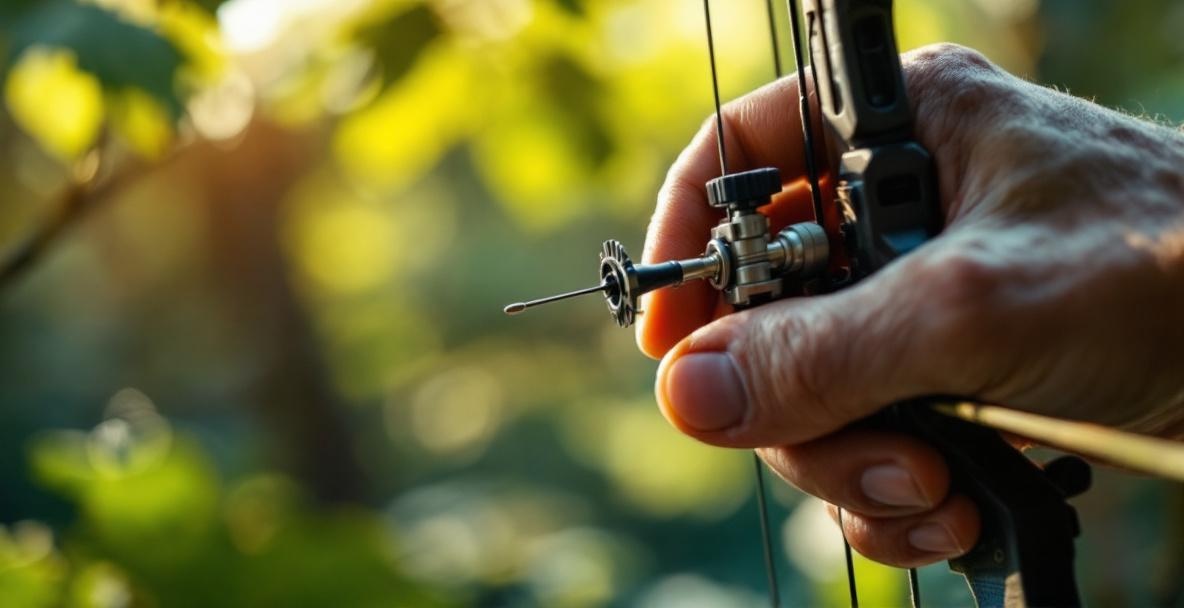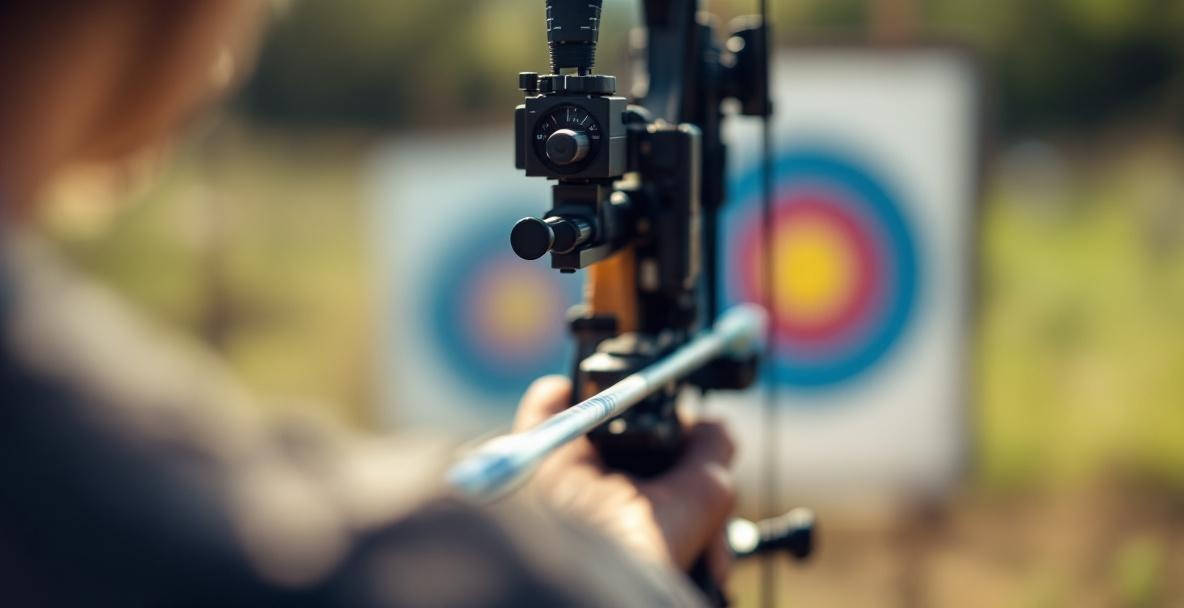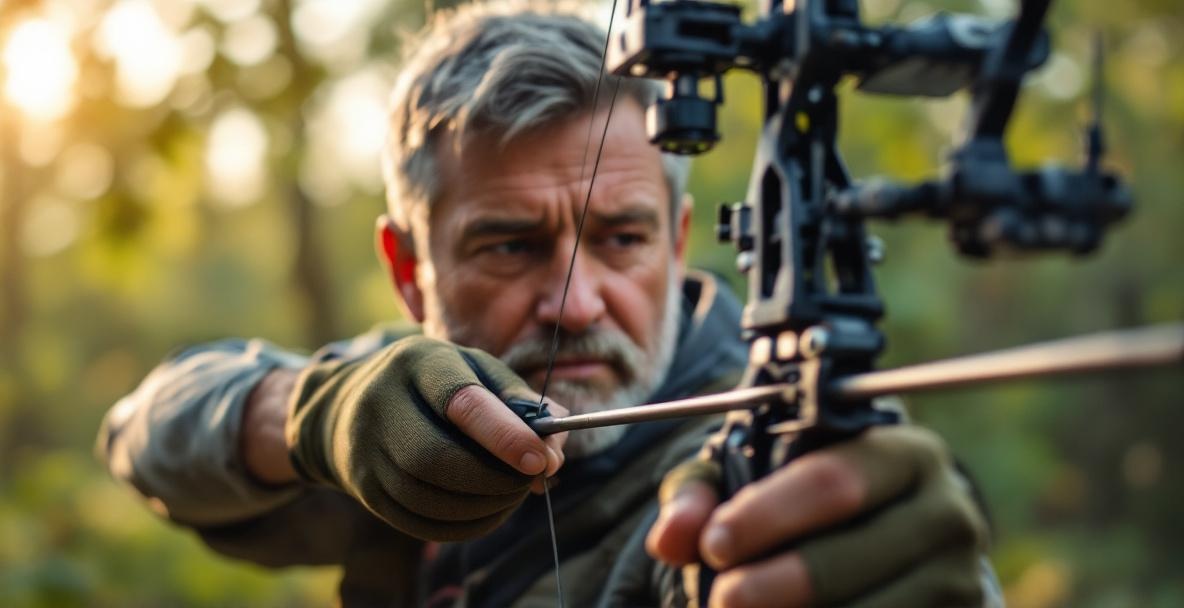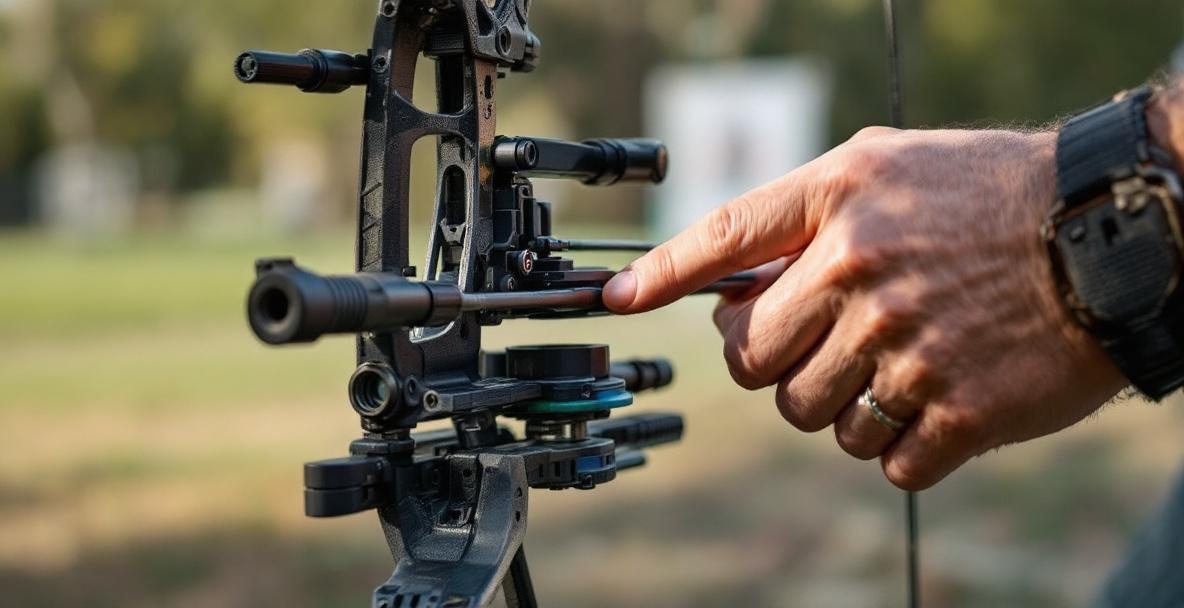Get Your Bow Sight Pins Right for True Accuracy

Missing the bullseye can be downright frustrating. If your arrows aren’t landing where you want them, the problem might be your bow sight pins. Properly adjusted bow sight pins are key to hitting your mark consistently. Whether you’re a serious competitor or a weekend shooter, learning how to set your pins right can boost your confidence and improve your shot. At OneX Archery we’ve seen how even a slight change in your setup can make a huge difference. Let’s roll up our sleeves and get into the details so you can hear that satisfying thwack when your arrow hits exactly where you aim.
Bow Sights 101: How They Really Work
Before you start tweaking any settings, it helps to know what’s going on with your bow sight. Most compound bow sights come with several pins you can set for different distances-usually from 20 to 60 yards in 10-yard steps. The idea is simple: wherever your pin sits, your arrow will follow. If your arrows keep landing high, you’ll need to lift your sight housing; if they’re off to the left, shift it to the left (for right-handed archers). It may sound a bit odd at first, but the trick is to follow your arrows-adjust in the direction they stray. A well-mounted bow sight on your setup gives you the knobs you need for both horizontal and vertical tweaks.
"When your bow sight pins are set right, your accuracy becomes second nature."
Let this guide every small change you make.
| Where Your Arrows Group | How to Move Your Sight | What You’ll See on Target |
|---|---|---|
| High | Lift your entire sight housing | Arrows drop toward the center |
| Low | Lower your entire sight housing | Arrows rise up to the center |
| Left (for right-hand users) | Slide the sight to the left | Arrows shift right |
| Right (for right-hand users) | Slide the sight to the right | Arrows move left |
Setting the First Pin
Start by working on your top pin-usually marked in red or bright green-which is meant for your closest target, generally 20 yards away. This pin is your reference for every other adjustment later on. Pick a safe spot with a solid backstop and stand exactly 20 yards from your target. With steady form, fire off 3 to 5 arrows using this pin. Don’t lose heart if your grouping isn’t tight at first; practice makes perfect.
Watch where your arrows end up compared to where you aimed. For example, if they keep landing 3 inches low and 2 inches to the right, shift your sight housing down and to the right by a similar amount. Start with tiny tweaks-around 1/16 of an inch or less-and then shoot another group to check your work. Keep at it until your arrows consistently hit right on target with your reference pin.
Setting Up Pins for Longer Distances
Once you’ve got your 20-yard pin dialed in, it’s time to work on the others for longer distances. Step back to 30 yards and fire a few arrows with the same steady form. Instead of adjusting your entire sight, loosen just the 30-yard pin (often the second pin) and gently nudge it until it lines up with the bullseye at that range.
Keep repeating this process as you move farther back. Be aware that wind starts to play a bigger role over longer distances, so you might need to tweak your settings for different seasons. Many archers have found that adding proper stabilizer weights to their gear greatly improves long-distance accuracy by cutting down on bow torque and hand shock.
| Distance (yards) | Pin Color | Initial Adjustment | Why It Counts |
|---|---|---|---|
| 20 | Green | Tiny tweak with 3-5 arrows | Sets a solid baseline |
| 30 | Red | Just a slight drop | Balances the early drop |
| 40 | Yellow | Little windage fix | Crosswinds start to affect flight |
| 50+ | Blue/Orange | Small elevation shift | Arrow arc is steep and tricky to control |
Keep fine-tuning each pin with repeated tests until you can hit your mark no matter the distance. Patience in this process really pays off, and with a steady form and set sight pins, you’ll soon be confident in every shot you take.
Why Tuning Your Sight Pins Makes a Big Difference

Getting your sight pins right can mean the difference between a solid hit and constant misses. At OneX Archery we’ve seen many archers turn their game around just by learning this key skill. Well-adjusted sight pins not only sharpen your accuracy but also boost your confidence and reduce frustration. When you’re not fighting with your equipment, you can really zero in on your form. Let’s look at why this skill is such a must-have on your archery journey.
"When your sight pins are spot on, you shoot with confidence and less frustration, letting your form shine."
| Benefit | With Well-Set Pins | With Poorly Set Pins |
|---|---|---|
| Confidence | Trust in every shot | Uncertainty in each attempt |
| Learning Curve | Reinforces good shooting habits | Leads to quick development of bad habits |
| Long-Range | Consistent groups at 30 to 60 yards | Misses grow larger with distance |
| Enjoyment | Inspires you to practice more | Frustration that can kill your drive |
Get to Know Your Bow Sight
Think of your bow sight as your personal aiming buddy. It attaches to your bow and holds several pins-or sometimes just one adjustable pin-to help you line up your shot perfectly. Each pin is set for a specific distance, whether you’re aiming from 20 or 60 yards away. The idea is simple: when you line up your sight correctly and keep your form steady, your arrows go where you want them.
These days, bow sights come in different styles. Some have fixed pins for different ranges, while others let you adjust a single pin on the fly. The beauty of a well-tuned sight is that it takes into account the natural drop of the arrow during its flight. Learning to work with your bow sight effectively can really boost your consistency whether you’re practicing at the range or out in the field.
When you team up your sight with quality stabilizer weights from OneX Archery, you get a system that cuts down on random errors and gives you repeatable accuracy. The sight lines up your aim, and the stabilizers tame bow shake and vibration. This partnership lets you focus solely on your form and execution.
Troubles When Your Pins Aren't Set Right
It’s hugely frustrating to have solid form yet see your arrows stray off target. Often, this happens because the sight pins are not set correctly. A common issue is the “left-right” problem, where arrows consistently group on one side. That’s usually a sign that your horizontal or windage setting needs a little work. If your arrows keep going too high or too low, then the elevation on your pins may need a tweak.
Another clue is when you're true at 20 yards but off at 30 yards. This inconsistency becomes more pronounced with longer shots, making them especially challenging. Many archers struggle with accuracy in changing conditions, often because they don’t adjust their pins for the environment.
The most annoying part is when your arrows group tightly but not where you want them. That shows you have good form, but your sight needs a bit of fine-tuning. The good news is that these issues are usually easy to fix with the right sight adjustment techniques. Otherwise, you might end up forming bad habits like aiming off-center, which only makes things worse. Get those adjustments right, and your confidence will soar.
Must-Have Tools to Get Your Sight Set Up
Before you dive into adjusting your bow sight pins, gather the right tools. Being prepared can mean the difference between a smooth setup and a frustrating, drawn-out process. At OneX Archery we know that the right preparation makes everything easier. Let’s run through what you should have handy before you start tweaking your sight pins for that perfect shot.
Grab the Right Gear
First off, make sure you have the proper Allen wrench set or hex keys that match the screws on your bow sight. Most sights use metric sizes between 1.5mm and 3mm, but some brands may use imperial sizes instead. It’s a smart idea to have both sets in your toolbox. A multi-tool designed for archery is also a great asset since it bundles the most commonly needed sizes into one handy package.
"A steady hand makes all the difference in small adjustments."
Keeping your bow secure is key when fine-tuning every little movement.
| Tool | What It Does | Helpful Tip |
|---|---|---|
| Full-Size Bow Vise | Keeps your bow rock-solid in place | Level your bow before you tighten the clamps |
| Portable Vise/Clamp | Lets you tune your bow on the go | Anchor it to a picnic table or tailgate |
| Metric & Imperial Allen Keys | Tighten or loosen those sight screws | Color-code the sizes for quick access |
| Rangefinder | Checks the exact distance to your target | Re-check the range after every target reset |
| Notebook & Pen | Jot down your sight settings | Snap photos of your notes for a digital backup |
A bow vise is a real game-changer when fine-tuning your sight pins. It holds your bow so securely that you can use both hands without worrying about a slip. Professional-grade vises offer the best stability, but portable versions work well if you’re on a budget or need to make adjustments at the range. Remember, a steady hand makes a huge difference in small adjustments and leads to better accuracy.
When it’s time to test your settings, have quality target materials ready along with a rangefinder or measuring tape. Your target should be tough enough to handle several shots. A rangefinder ensures you’re shooting from a set distance, and that consistency is key for getting your pins right. Also, keep a notepad and pen nearby so you can record your current settings before you make any changes. This simple step can save you from having to start over if things go awry.
Creating Your Ideal Workspace
A good workspace starts with great lighting. Natural daylight is best, but if you’re inside, set up under bright, even light that won’t cast annoying shadows on your work. Poor lighting can lead to misaligned pins or even stripped screws, which is the last thing you need. If necessary, use a small headlamp to focus light exactly where you need it.
Your work surface is also a big deal. A stable, clean workbench at the right height keeps you comfortable and helps organize your tools. Lay down a soft mat or towel to protect both your bow and the table from scratches. Many archers find that setting up their own archery maintenance space makes the process smoother and keeps all critical tools right at hand.
Safety is always important. Make sure your workspace is free from distractions and potential bumps. Keep children and pets away, and even while adjusting, follow proper arrow safety rules. If you’re testing at home, having about 20 yards of clear space is ideal. For indoor work, use a large target backstop that safely catches stray arrows.
Step-by-Step: Fine-Tuning Your Sight Pins

Taking the time to adjust your bow sight pins might seem like a lot of work, but careful steps really do pay off. A well-tuned sight means more consistent shooting every time you draw the bow. This step-by-step guide will walk you through each phase so that your sight pins match your style and conditions. Remember, a well-balanced bow-especially when paired with stabilizer weights from OneX Archery-works hand in hand with fine sight pin tweaks to give you top-notch accuracy.
Get Your Bow Ready First
Before you start adjusting the pins, make sure your bow is set up and secure. Place it in a sturdy position; using a bow vise is best because it stops any unwanted movement. If you don’t have a vise, find a stable surface where your bow can sit without shifting. This stable base is essential for making precise tweaks.
Next, check that every bolt on your sight housing is snug but not overtightened. Loose parts can shift when you’re making adjustments, which throws off your results. Also, inspect your sight pins to be sure they’re clean and easy to see-any dirt can lead to missteps. We suggest getting your bow balanced with proper stabilizers first because a balanced bow helps keep your aim steady both during setup and in actual shooting.
Finally, gather all your tools-your hex wrenches, a small screwdriver, and maybe a level-so they’re right at hand. Working in good light helps you clearly see the sight pins and screws as you adjust them.
Fine-Tune Your Elevation Settings
Elevation settings control how high or low your arrows land by adjusting the vertical position of your sight pins. Find the elevation adjustment screw on your sight; it usually moves either the whole housing or just an individual pin. Keep in mind that moving the pin upward will make your arrows hit higher on the target, while moving it downward will bring them lower.
Start with the pin set for your closest distance, usually at 20 yards. Fire 3 to 5 arrows from that spot and note where they cluster. If they group too high, nudge the pin up; if they’re too low, move it down. Make tiny adjustments-about 1/16 to 1/8 of a turn at a time-and test with another round of arrows. This careful, gradual approach helps you avoid overcorrecting.
Once your 20-yard pin is spot on, move out to 30 yards and repeat the process for that pin. Continue working through each distance from nearest to farthest, and always keep your shooting form consistent. Your shooting technique is key to making these adjustments work.
Tweak Your Windage Settings
Windage adjustments take care of the side-to-side placement of your sight pins. This helps you deal with crosswinds and natural shooting tendencies. Locate the windage mechanism on your sight and use it to shift the pins left or right. For most right-handed shooters, moving the pin to the left makes the arrow hit to the right, and vice versa.
As with elevation, start by firing several arrows from your baseline distance. If your arrows lean too far left, gently shift the pin left; if they drift right, move it right. Make small, measured changes and test each time until your arrows cluster in the center. Remember that wind can change quickly, so if it’s breezy, your adjustments might need to be a bit different than on a calm day. OneX Archery stabilizer weights can help steady your bow in these conditions, ensuring your windage tweaks hold up no matter the weather.
Give It a Try: Testing Your Settings
After you’ve made both elevation and windage adjustments, it’s time to put your work to the test. Shoot 5 or 6 arrows at each distance where you’ve set a pin. Look at how they group-if your adjustments are right, the arrows should cluster closely around the center of the target.
Next, try a walk-back test by shooting one arrow from your closest distance. Then move to the next pin distance, shoot another arrow, and keep going through all your distances. When you look at the target, the arrows should line up vertically. If they start to angle left or right, you might need to tweak the overall windage on your sight housing a bit more.
Finally, test your settings in different lighting and weather. Whether it’s bright sunshine, cloudy skies, or a little rain, these conditions can change how you see your sight pins. Note if you need to make slight aiming adjustments because of the weather rather than a change in the sight itself. With proper sight installation and careful testing, your shooting accuracy will jump to a whole new level.
Troubleshooting When Adjustments Go Off Track

Even experienced archers run into hiccups when fine-tuning their bow sight pins. No matter how controlled your form is, the tiny details in adjustments can sometimes lead to setbacks. Below are some common issues and easy fixes to help your bow perform as reliably as OneX Archery stabilizer weights do.
Frequent Slip-Ups and Their Fixes
A big mistake is making too large an adjustment after only a few shots. It’s tempting to change things dramatically if your arrows are off, but that can create a confusing cycle of tweaks. Instead, stick to the idea of making small, measured shifts. If your arrows hit low, adjust the pin down in very small increments rather than a big jump.
Another common slip-up is not taking environmental factors into account. Wind, temperature, and lighting can all interfere with how your arrow flies. What seems like a sight pin issue might be the weather playing tricks on you. Try shooting on a calm day or in controlled conditions to get a true sense of your setup before making major adjustments.
Sometimes the problem isn’t with the pins at all. It may be a loose component, an unbalanced bow, or even a slight change in your form. Check that your bow’s stabilizers are properly installed and that no screws have come loose. Often, ensuring good weight distribution with quality stabilizer weights fixes issues that seem like sight pin problems.
When It's Time to Call in an Expert
While many adjustments you can handle on your own, there are times when bringing in an expert is the best move. If you’ve made several careful tweaks and still can’t get your arrow groups where you want them, it might be time for professional help. Skilled bow technicians have the tools and experience to spot issues-like cam timing or bow torque-that you might miss.
If your bow was shooting well and suddenly starts to act up with no obvious reason, that could be a sign of a hidden mechanical problem. In these cases, a qualified technician can inspect your entire setup, including the sight installation, and save you from hours of frustration. Professional guidance is especially handy if you’re switching to new archery styles or planning to compete. An expert can tailor your sight pins to match your shooting style and recommend gear like our precision-engineered stabilizer weights to boost your performance.
Wrapping It All Up: Your Journey to Better Accuracy
Getting your sight pins dialed in is more than just a technical task-it’s a big step on your path to becoming a better archer. This guide has taken you through everything from the basics to fixing common issues. At OneX Archery we know that great accuracy comes from both top-notch gear and solid technique. Keep working on your adjustments steadily-every little improvement builds toward that spot-on shot you’re after.
Your Final Checklist for Sight Pin Success
Before you head out to practice your newly refined bow sight skills, run through these essentials:
- Proper Tools: Have the right Allen wrenches, a level, marking tape, and a target face ready. Keeping these in a dedicated archery toolbox saves time when you need them.
- Mind the Environment: Always consider wind, lighting, and terrain. The settings that work at your home range might need tweaking at a tournament.
- Keep Records: Jot down your sight settings for different distances and conditions. This habit prevents endless readjustments and builds confidence in your setup.
Your bow’s stabilizer setup plays a big role in keeping your sight picture steady throughout your shot sequence. Quality stabilizers help reduce extra movement during aiming so that your sight pins remain steady on target. This becomes even more important when shooting in challenging wind conditions where a slight shift can make a big difference.
Once your sight pins are set just right, check them regularly-especially after moving your bow or changing locations. Even the best setups might shift slightly over time. Think of these adjustments as regular maintenance, and you’ll keep your accuracy sharp all season long.
Take the Next Step: Join Our Archery Community
Your journey to better accuracy doesn’t have to be a solo mission. Connecting with fellow archers can speed up your learning and give you insights you might not get on your own. Local archery clubs host meetups where you can watch seasoned archers as they tweak their bow sights for different conditions. These groups welcome everyone, regardless of skill level, and often offer mentorship that can really boost your game.
Online forums and social media groups dedicated to archery are also great resources for troubleshooting and learning new techniques. Share your experiences with sight pin adjustments, post photos of your arrow groups, and ask others for feedback. Many archers find that discussing their process helps clear up confusion and spot areas for improvement.
Building a community is an essential part of growing in archery. Our precision-engineered stabilizer weights are made by archers who know that balance is key for a steady sight. When your gear works with you rather than against you, those fine adjustments become more intuitive and effective. Learning how to install your bow sight correctly is just the start-optimizing it for your unique shooting style is where true accuracy is born.
Ready to transform your archery accuracy with properly tuned equipment? Visit OneX Archery today to explore our range of precision stabilizer weights designed to complement your newly adjusted sight pins and take your shooting to the next level of consistency and accuracy.
Leave a Reply